The Belvedere was constructed as the palace for Prince Eugene of Savoy, a great war hero of his time. He admired other war heroes such as Alexander the Great, and had sculptures of him and others all around his entry way where guests arrive. He also showed his defeat of the Turks by making them column/statues who held up the building. Prince Eugene of Savoy wanted to show off his appreciation for the arts through Belvedere, with beautiful Italian murals on the ceilings, rooms full of marble with sparkling chandeliers hanging from the ceiling, sculptures exuding images of strength and power, and minute details in every aspect of the palace. The irony is that the grand "upper" palace of Belvedere was his guest house, while his own residence was located in lower Belvedere, in a much more humble, modest building at the base of the gardens.
I was really excited to go on the Belvedere tour with our museum guide, Dr. O and it turned out to be one of my favorite class trips thus far. Although Gustav Klimt is a huge cult figure in Vienna and you can hardly walk two blocks down the street without seeing his work turned into a scarf, tote bag, or shot glass, I have been a fan of his work long before I came to this city. My sister is a fan of Klimt’s art and introduced me to his work awhile ago, so I have been highly anticipating our tour of the Belvedere. It turned out the Klimt was one of the last artists we looked at, and there were some other really amazing exhibits preceding his.
The first exhibit that Dr. O dissected for us was that of the sculptor, Franz Xaver Messerschmidt, and is called "Character Heads." Messerschmidt has an incredible story leading up to these character head creations. He was once the court sculptor during the reign of Maria Theresia and created conventional statues of the Empress and her husband. Right around 1774, when he was in his mid-thirties, the sculptor was up for promotion to the department head of the art academy but was passed over and someone else got the job. Even after he quit his position as court sculptor, and Maria Theresia tried to make amends with offering high positions in the court and a handsome salary, Messerschmidt was permanently turned off from having anything to do with Vienna or the royal court. He moved to Bratislava where he lived a reclusive life and was said to torture himself while living in seclusion. Messerschmidt had gone from a notorious court sculptor to a virtually ignored schizophrenic. His art reflected his tormented psyche and he began to sculpt heads with extremely intensely animated expressions. The heads were all modeled after his own expressions of pain, sadness, delusion, anger, and even a distorted happiness that he created by torturing himself in the mirror and sculpting the very facial expressions that he, himself made. When the sculptor was dying of pneumonia he threw half of his sculptured into a nearby river, and today 54 of the original 69 are known to exist (and a huge portion are in the Belvedere.) Even though these sculptures were created during the days of Messerschmidt’s insanity, they still reflect his incredible talent and are haunting in their realistic appearance. He also worked with many different materials such as marble and lead (which couldn’t have helped much with his sanity issues.) I was completely blown away by both his talent, and the sorrow of this great sculptor’s life story which led him to such a state of mind to create these disturbing heads.
The next exhibit that really interested me was the Biedermier style of art. I really enjoyed these paintings, although I don’t necessarily think I am the Biedermier type. Biedermier is a term that was adopted after the Napoleonic wars when the Austrian monarchy cracked down on the citizens and began to closely censor the lives of all citizens in order to stifle any possibility of revolution. In German, the term is "Reaktion" and this way of life existed from about 1815-1848 and onwards. The monarchy imposed a system of spies, underground informants, and secret agents to alert those in power of any possible revolutionary activity, after the American and French revolutions led to democracy and monarchies around Europe were beginning to crumble in this new age of Enlightenment. Biedermier became the domestic response of the people and defined not just a way of life, but art, interior design, and an emphasis on the family. People turned inwards and reacted to the strict public sanctions by focusing on the family and home. This coping mechanism applied mostly to the middle and upper-middle class, who had the resources to decorate their homes with luxurious yet comfortable furniture, rear well-mannered children, take part in music, arts, games, host small gatherings to entertain their inner circles, and most of all uphold privacy. The art reflecting this time period of Austrian history is very family oriented, with portraits of children in the laps of their loving parents and toys scattered about the floor in a lovely, yet liveable home. There are paintings of couples in love, playing music, or gazing at each other with devotion. There is a balance of properness and playfulness, well-mannered but easy going, and aesthetic yet practical. Frederick von Amerling is the artist who painted a beautiful portrait of a father and his three children in their upper-middle class Biedermier home. I really like this art style because it often tells a story of the people and their lives portrayed in the paintings. They come alive and its almost like you can peek into their personal, private lives to catch a little glimpse of what it was like for them in the stifling "era of Meternech.."
I was really excited to move on to the Gustav Klimt room. My two favorite paintings in there were the Judith of Holofernes and of course, The Kiss. The Judith painting was completed in 1902 and shows this image of a beautiful, seductive, mostly naked woman who appears to have truly enjoyed (in an almost sexual way) decapitating the man that threatened her village with his army (in the Biblical story.) She is a great example of Klimt’s obsession with women and "the feminine mystique." He also used his characteristic gold leafs to bring the painting alive with shimmering splendor. The Kiss was also amazing, especially after seeing it reprinted so many times, to see it in person was completely different. The painting is a lot larger in real life than I expected, and there is so much more detail that I noticed when seeing it in real life. Dr. O explained that the use of mosaics was inspired from Klimt’s trips to Venice where he admired the stained glass in St. Mark’s, and the shimmering waters of the canals. He also depicts the female figure as soft, flowing, and circular oval shape compared to the man’s more rectangular, masculine shape. We discussed the painting for a while and whether or not the woman enjoys being kissed or is pulling away from the man. My personal opinion (because im a romantic) is that she enjoys the kiss and is lovingly falling into his arms. Overall, the Belevedere was a really enjoyable museum to visit, and once again, I learned a lot and was highly entertained by Dr. O’s tour.
Saturday, August 30, 2008
Subscribe to:
Post Comments (Atom)
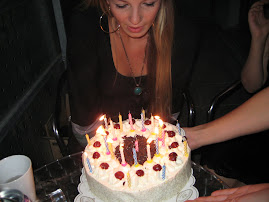

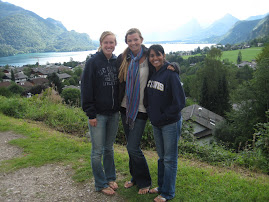
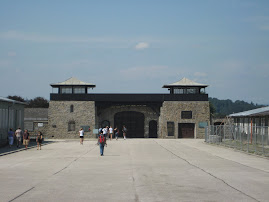
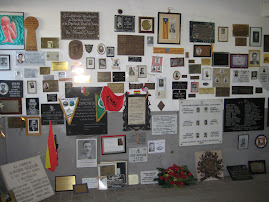
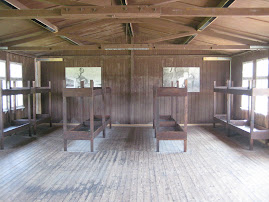
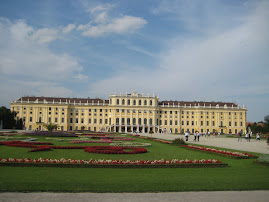
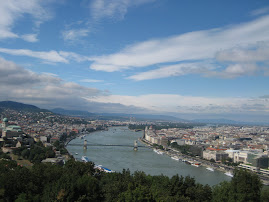
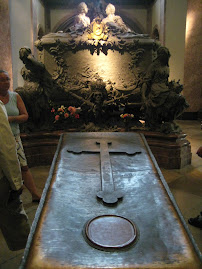
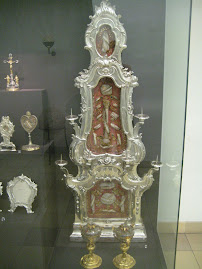
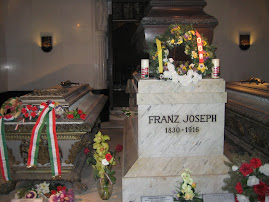

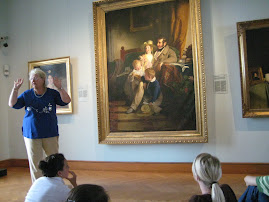
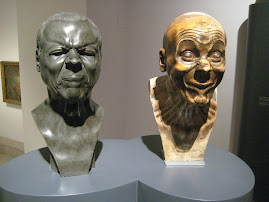
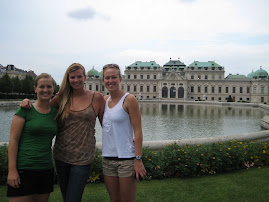
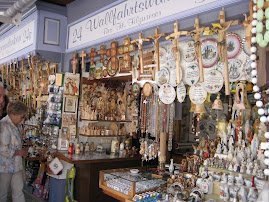
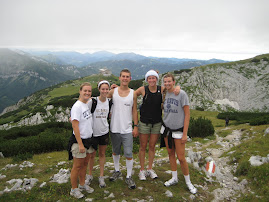
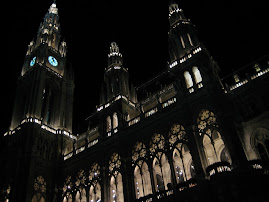
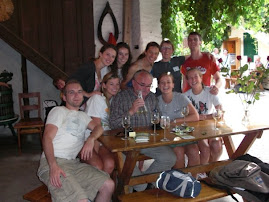
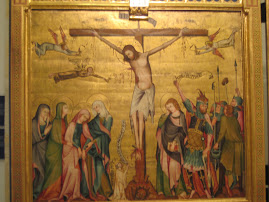
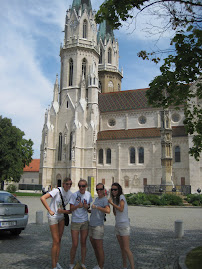
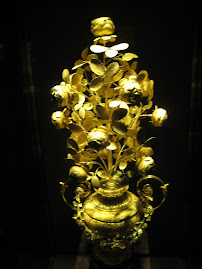
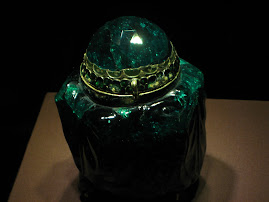
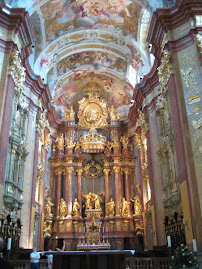
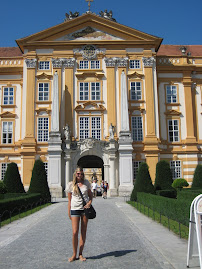
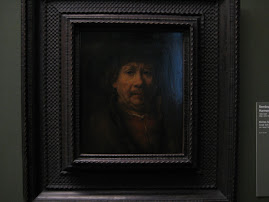
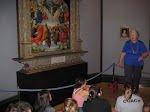
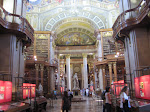
No comments:
Post a Comment